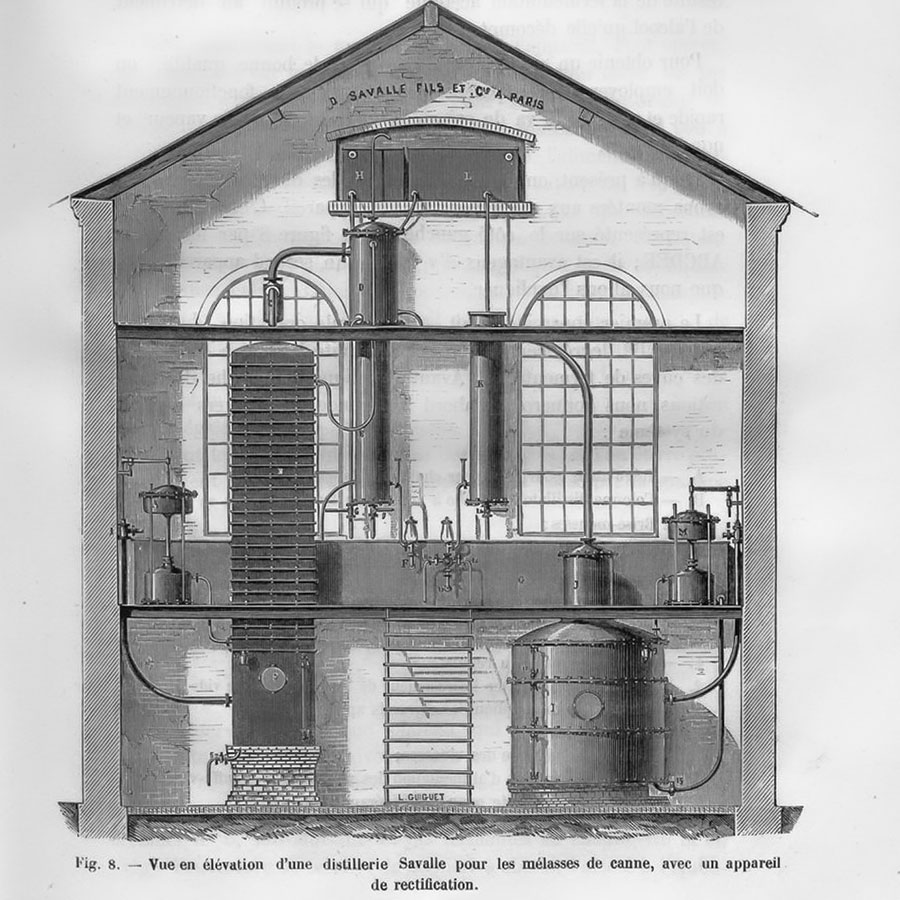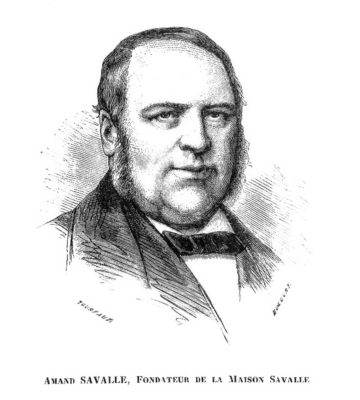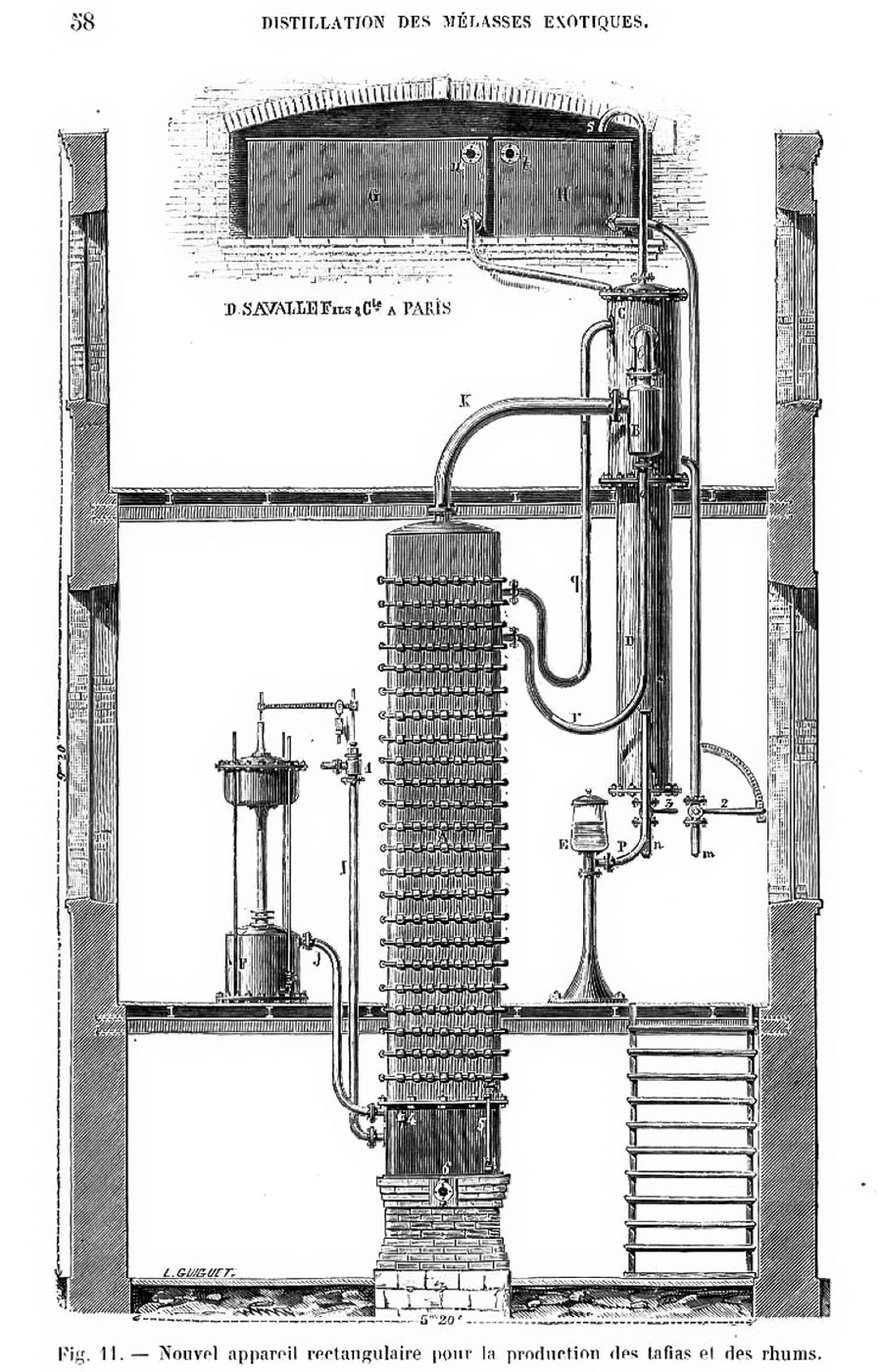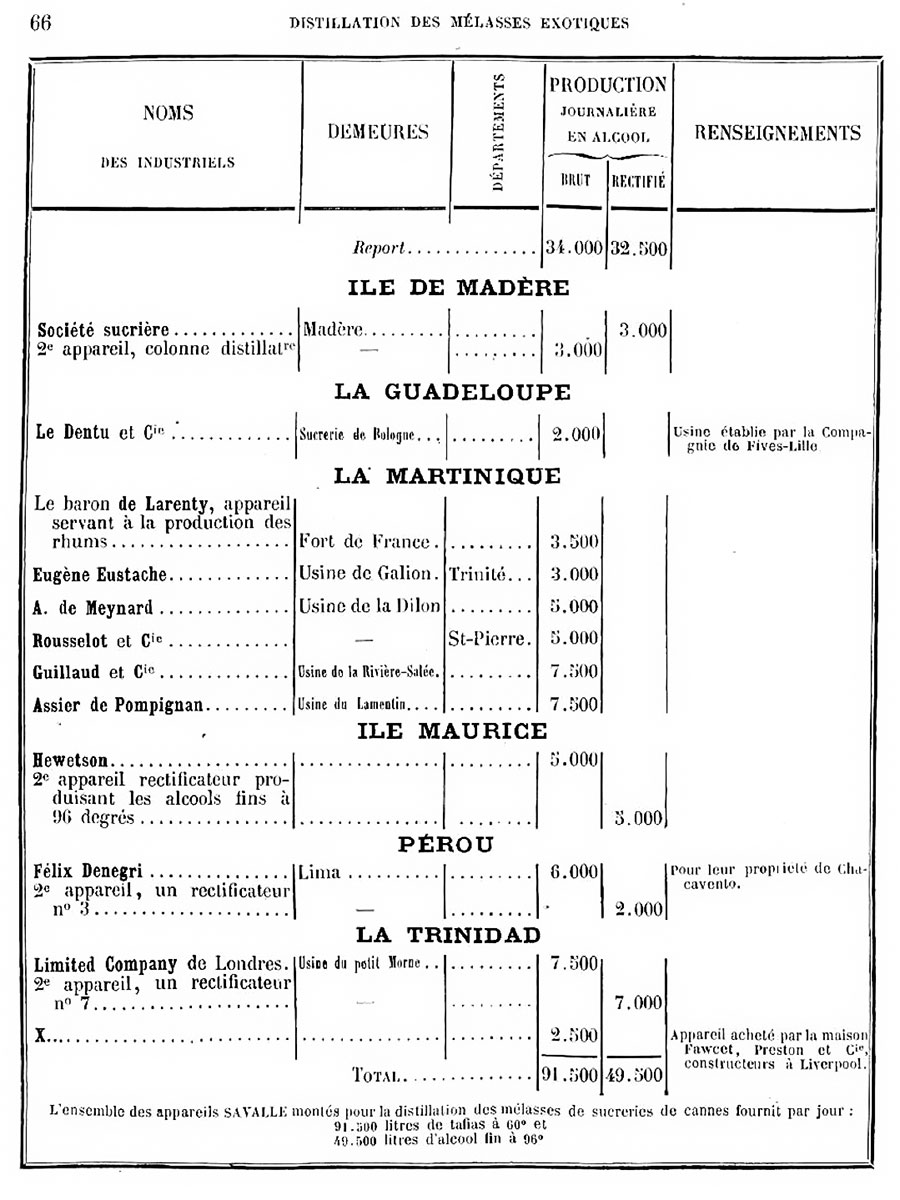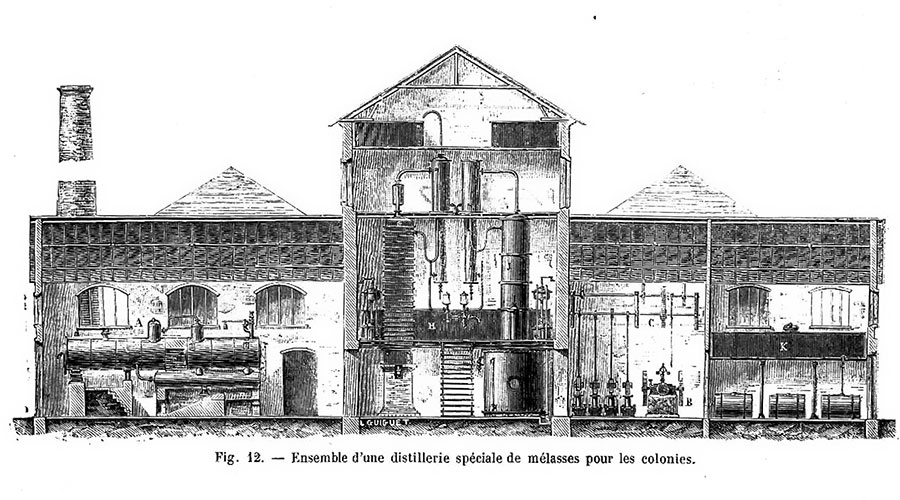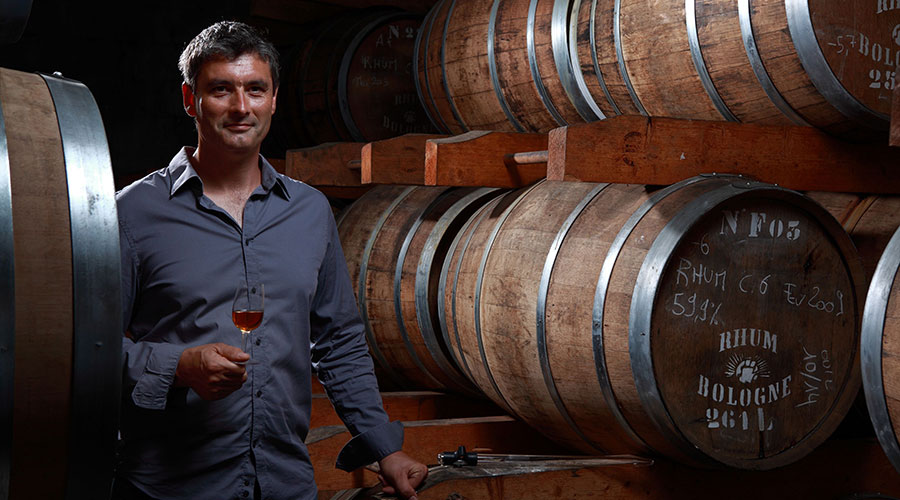Our historian made a remarkable discovery at the end of the nineteenth century while consulting a fundamental book on distillation apparatus: the first Savalle column of Guadeloupe, a masterpiece of West Indian distilleries, was installed before 1876 at Bologne. This is the story of a discovery, unknown to the employees of the current distillery!
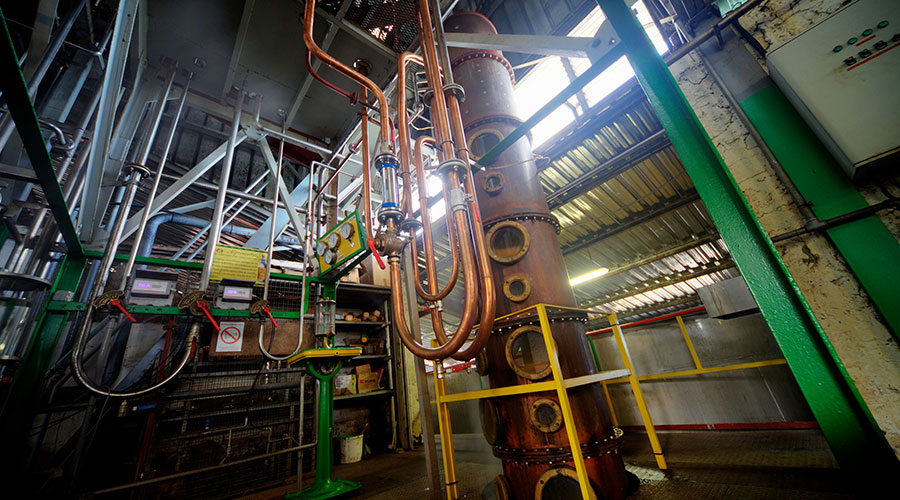
Bologna claims its origins as an “agricole distillery” dates back to 1887. If this is correct, its birth certificate dated December 28, 1887 is in fact an act of rebirth. It is entitled: “Order of the Director of the Interior authorizing Mr. De Pombiray (Amédée) to put back into activity the distillery, without rectification work, of the Bologne house, located in the commune of Saint-Claude”.
The decree also states that “the work has been interrupted for more than a year”. To be honest, the first traces of distillation on the Bologne estate are quite old. But what do we know about this pre-existing distillery to the agricole distillery we still know today?
The Bologne house, like many others in the West Indies, was a sugar house. Its most famous owner in the nineteenth century was undoubtedly Jean Amé-Nol. The estate became insolvent in 1873 and was auctioned off. E. Le Dentu purchased it and constructed a modern sugar factory.
Since 1843, Guadeloupe has been on the path to modernization, resulting in the extinction of the traditional “Père Labat” dwellings. The new owner of Bologne built one on the site in 1875.
Parallel to the sugar story, Désiré Savalle, a mainland industrialist, promoted his distillation columns, particularly those intended for the distillation of “exotic molasses,” to use the term of the time. He published works on the subject, which included, “Appareils et procédés nouveaux de distillation” in 1876. In this book, the author lists the Savalle apparatus as established in the world. Concerning Guadeloupe, the “Sucrerie de Bologne”, property of “Le Dentu et Cie” is mentioned.
The column was erected by the Fives-Lille Company and has a production capacity of 2000 liters per day. Bologne became the first distillery in Guadeloupe to install a Savalle column on its property.
The mention of this distillery is absent in a list established three years earlier, but still present in another one of 1884. The distillery, leaning against the sugar factory, was thus registered in time. Without having formal proof, it was probably built with the sugar factory, in 1875.
However, this new sugar factory gradually became part of a movement of land concentration, initiated by all the millers to secure their cane supply. Bologna thus acquired the land of two other houses, thus increasing its land area from 128 hectares in 1875 to 412 in 1884. Together with the Usine Bonne Mère, it was the smallest factory on the island, the largest being the Usine Darboussier with 4,203 hectares in 1884.
A worldwide sugar crisis erupted in 1884. Prices fell by 25% in a matter of months, and output fell by more than 30% in less than two years. This had the immediate effect of eradicating the last traditional dwellings.
The crisis then wreaked havoc on the factories. In 1886, the Bologna factory was closed down. Bologna was only reborn as an agricole distillery the following year. The Bologne distillery in its current form was established in 1887, but it was the first in Guadeloupe to use the Savalle column.

